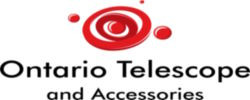Capturing the California Nebula: A Guide for Astrophotographers
Posted by - S. Mallia on 2024 Oct 12th

- image by Steve Siedentop
The California Nebula (NGC 1499) is a breathtaking, elongated emission nebula located in the constellation Perseus. Its shape resembles the state of California, making it a popular and rewarding target for narrowband astrophotography. In this guide, we’ll explore the technical requirements for capturing this celestial wonder, including sensor-specific focal length recommendations, the best time to start imaging, and strategies for maximizing signal-to-noise ratio (SNR).
Framing the California Nebula with Rule of Thirds
The California Nebula spans approximately 2.5° across the sky, making it a large target that requires thoughtful framing. The rule of thirds helps position the nebula in a visually pleasing way, and selecting the correct focal length based on your sensor size ensures everything fits into the frame with room for compositional adjustments.
- APS-C Sensor (~22mm x 14mm):
For APS-C sensors, focal lengths between 300mm and 400mm work best. This range ensures the nebula fits comfortably across the frame with space for artistic composition. The ZWO ASI2600MM-Pro and QHY268M are excellent mono cameras that feature this sensor size, making them ideal for this focal length. - Micro Four Thirds Sensor (4/3) (~17.3mm x 13mm):
With the smaller 4/3 sensor, a focal length between 200mm and 300mm works well. This allows the nebula to fill the frame while leaving room to apply the rule of thirds. Cameras such as the ZWO ASI294MM-Pro or the QHY294M are great mono options with this sensor size.
For astrophotographers seeking versatility, the Starfield Gear60Q telescope provides a well-matched optical system for framing wide-field targets like the California Nebula. Its compact design, sharp optics, and fast focal ratio make it ideal for imaging large emission nebulae through APS-C and 4/3 sensors.
When to Start Imaging: Altitude and Horizon Considerations
The California Nebula is best imaged when it is high enough in the sky to avoid atmospheric interference.
- Ideal Altitude: Begin capturing images when the nebula rises at least 30° above the horizon. At this point, atmospheric scattering and extinction are minimized, improving contrast and sharpness.
- Optimal Imaging Window: From October through January, the nebula culminates around midnight in the northern hemisphere. Use software like SkySafari Pro or Stellarium to monitor its altitude and ensure you capture it when it’s highest in the sky for the clearest possible data.
Optimizing Signal-to-Noise Ratio with Short Exposures
Achieving a high signal-to-noise ratio (SNR) is crucial for capturing the nebula’s intricate details. While long exposures traditionally help gather more signal, modern CMOS cameras—such as the ASI2600MM-Pro and ASI294MM-Pro—excel with shorter exposures, offering several advantages:
- Prevents Star Saturation: Short exposures (typically 60 to 120 seconds) prevent bright stars within the nebula from becoming oversaturated, preserving both color and structure.
- Reduces Guiding Requirements: With shorter exposures, guiding errors are less likely to affect your data, making it easier to achieve sharp images with entry- and mid-level mounts.
- Stacking for Superior SNR: Stacking dozens or hundreds of short exposures in software like PixInsight or DeepSkyStacker averages out noise while boosting the signal, producing a clean final image.
- Dithering Benefits: Regular dithering between exposures eliminates fixed pattern noise and hot pixels, further enhancing the clarity of the final result.
Filters and Narrowband Imaging Strategy
Since the California Nebula emits primarily in hydrogen-alpha, using a narrowband filter is essential for capturing its fine details. For dual-band imaging, the Antlia ALP-T filter is an excellent option. It isolates both Ha and OIII wavelengths, enhancing contrast and reducing interference from light pollution. It’s particularly effective in suburban environments, making it a versatile choice for a variety of sky conditions.
Even if you’re imaging under dark skies, narrowband filters are still useful for bringing out faint outer regions of the nebula that are otherwise difficult to capture.
Ready to Shoot the California Nebula
With its vibrant hydrogen emissions and striking structure, the California Nebula is a rewarding challenge for astrophotographers. Choosing the right focal length for your camera—whether it's the ZWO ASI2600MM-Pro, QHY268M, ASI294MM-Pro, or QHY294M—along with careful planning for altitude and exposure strategies, will set you up for success. Pairing this with the Starfield Gear60Q telescope gives you a highly capable optical system, perfect for tackling this expansive target.
So, get your equipment ready, align toward Perseus, and immerse yourself in narrowband imaging. With the right techniques, you'll uncover the California Nebula’s beauty in all its glory and create a stunning image you’ll be proud to share. Happy shooting!
